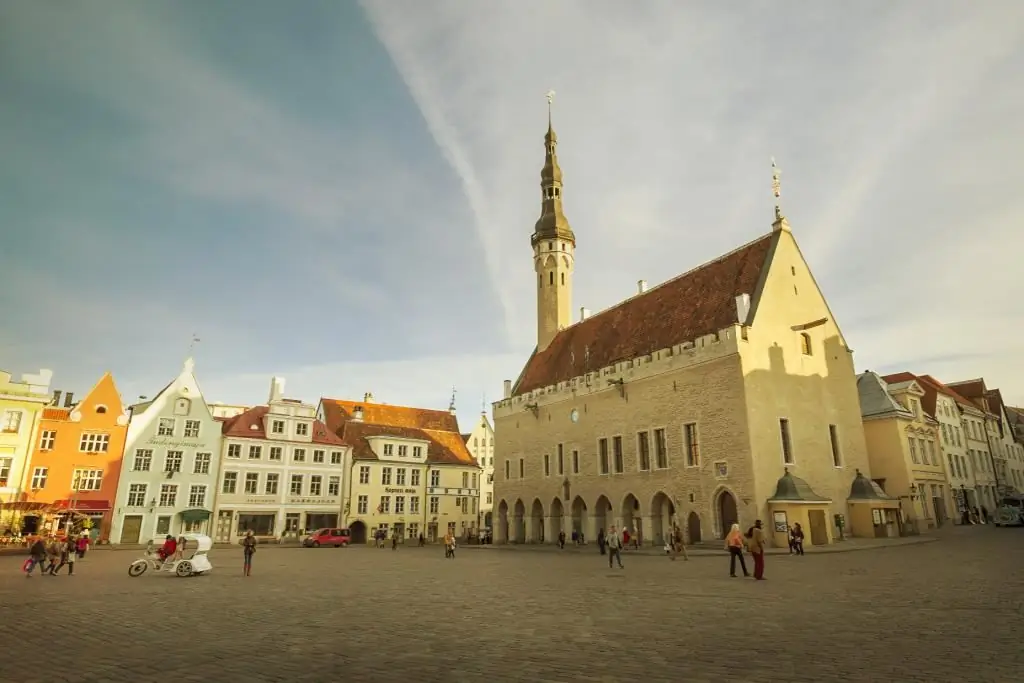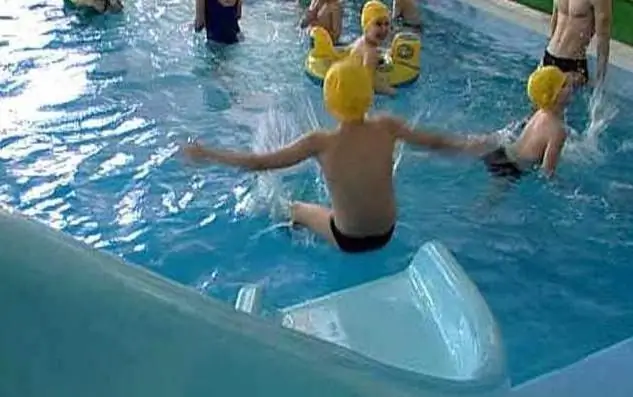- Author Harold Hamphrey [email protected].
- Public 2023-12-17 10:06.
- Last modified 2025-01-24 11:10.
The capital of Russia is a city with a truly centuries-old history and a huge cultural heritage. A large number of attractions located here is the main reason why many people from all over the world seek to visit Moscow.

Tourists usually want to see Red Square, the Cathedral of Christ the Savior, Poklonnaya Hill, the Cathedral of the Kazan Icon of the Mother of God, the Arbat, the Novodevichy Convent and, of course, the majestically towering fortress city - the Kremlin. Its territory is richly decorated with towers and palaces, and the interior decoration is amazing. To get a lot of unforgettable impressions, having gone on an excursion to the Moscow Kremlin, you should definitely look into the building of the State Armory. Today, it is here that the Diamond Fund is located, the amazing exhibits of which are available for viewing by everyone. And it's really worth itsee with your own eyes.
General information
The Moscow Kremlin Diamond Fund is a collection of very rare jewelry and precious stones that have great artistic, historical and material value. Unfortunately, it is not possible to show these treasures to visitors in full at the present time. However, the guides of this exhibition do their best to acquaint everyone with the diversity and history of this truly rare collection of jewels.
History of the Diamond Fund

The Kremlin Diamond Fund was established in 1719 by Peter the Great. The last Russian tsar established the rules according to which all the most valuable things (primarily it concerned various coronation regalia) belonged to the Russian state and were constantly kept in the treasury under round-the-clock protection. Only three officials, having gathered together, could get precious items intended for certain solemn ceremonies. This is the royal rentmeister, chamber adviser and chamber president. Each of these people had their own key to one of the locks. Initially, the chamber, which was specially built by decree of Peter the Great to store various valuables, was referred to in official documents as the Diamond Fund, but a little later it was renamed the Diamond Room. The boyars were supposed to guard the treasury day and night and were responsible for the royal jewels with their own heads.
From the Romanovs to the present day

Over time, the Diamond Fund of Russia was replenished, some jewelry was sold, others were remade. The initially adopted set of rules changed, but the order of storing jewelry remained always the same. During the reign of the ancient noble family of the Romanovs, the room in which all the valuables were located was called the Diamond Room. In 1914, during the First World War, there was a direct threat of the loss of royal jewels. For this reason, the entire collection was moved from the Winter Palace, located in St. Petersburg, to the Moscow Armory. In January 1922, by decision of a specially created commission for the selection and examination of valuables, part of the jewelry was transferred to museums. The other half went to Gokhran - the State Treasury of valuables, which became a kind of successor to the treasury of the Royal family. In 1925, the crown jewels and other jewels were put on public display for the first time in the House of Unions. In October 1967, the government decided to create a permanent exhibition in the Moscow Kremlin.
Exposure of the Diamond Fund

Currently, the Diamond Fund contains a collection of very rare jewelry, as well as diamonds and diamonds. During the entire period of its existence, it was gradually replenished with orders, rare gems and other precious stones. At the same time, a special jewelry laboratory created to carry out the restoration of deteriorating valuables, such asfor example, the Small and Large Imperial Crowns, as well as other items belonging to the imperial family. Thanks to very fine professional work, more than a hundred pieces of jewelry were returned to the fund.
First Hall of the Fund
Excursion to the Diamond Fund includes a visit to two halls. In the first one, visitors can see domestic diamonds and diamonds, art items made of semi-precious and precious stones made by Soviet jewelers, as well as platinum and gold nuggets. The most famous of the latter are "Mephistopheles", "Camel" and "Great Triangle", which weighs thirty-six kilograms. In addition, this hall presents a map of Russia made of diamonds, and a large exposition of Yakut and Ural diamonds, accompanied by samples of minerals - satellites of diamonds and various rocks of the diamond type. Also here you can see special tools: cutters, drills and drill bits. A separate group includes giant diamonds and crushed, chipped, ovalized, polished, sawn and other pre-processed diamonds intended for cutting into brilliants. By the way, the latter are also presented in this hall. Basically, these are the works of the masters of the Smolensk factory. A special place is given to the showcase "Russian Gems", demonstrating the diversity and richness of Russian colored stones. Today, the exposition includes an extensive collection of sapphires, emeralds, topazes and amethysts. In addition to everything listed in the first hall, contemporary art is presented and rarephotographic documents that characterize the achievements of the diamond mining industry of the Soviet period.

Second Hall of the Fund
The second hall of the fund presents to the attention of visitors a variety of historical values and jewelry of the eighteenth - nineteenth centuries, which until 1917 were among the crown values of the Russian Empire. Most of the jewelry is made in the style of classicism and rococo. The latter is most clearly expressed in the "Big Bouquet" made of Brazilian diamonds and Colombian emeralds and acting as an adornment of the bodice of Elizabeth Petrovna's formal dress. In addition, the works of one of the most famous jewelers of the eighteenth century - Duval and Nozier, are presented in the second hall of the Diamond Fund. The museum also invites visitors to get acquainted with a variety of decorations for costumes - epaulettes, stripes, laces with tassels and hairpins studded with diamonds of various sizes. Two historical stones of the fund are also exhibited here - this is the largest chrysolite in the world, brought from the island of Zeberget, and the famous diamond from India called "Shah", which has a weight of eighty-eight carats and whose incredible story is engraved by skilled craftsmen on the stone itself. And finally, it is in the second hall that the Great Imperial Crown, which was made in 1762, is kept. In terms of the richness of the material, the beauty and subtlety of the jewelry work, it has no equal. The spinel that crowns it, weighing over three hundred and ninety-eight carats, is the sixthhistorical foundation stone. Its transparency and purity make it one of the most beautiful in the world.

The Importance of the Diamond Fund
Treasures, which are carefully kept by the Diamond Fund of the Moscow Kremlin, have a worldwide artistic and historical value. With their help, you can follow in detail the development of jewelry art in Russia, as well as get acquainted with the amazing creations of outstanding masters of jewelry. In addition, they allow us to see in precious stones not only a great material value, but, among other things, a wonderful embodiment of nature itself, which fills life with joy and beauty. It is for these reasons that the Kremlin Diamond Fund is today one of the most visited, both by tourists and residents of the capital. Everyone wants to come here and see these unique treasures in person.
Visit to the Diamond Fund
As for buying tickets to the Diamond Fund, you can buy them yourself at the box office, which is located directly in the Diamond Fund Museum. Each visitor receives a special brochure and is attached to one of the tour groups that gather on the spot. It should be noted that tickets to the fund are not sold in advance. In the same way as they cannot be bought separately from the tour. The only exceptions are the summer months, when you can visit the foundation on your own.
Excursions to the Diamond Fund

You can order a tour either by contacting the cash desk of the Armory Chamber of the Moscow Kremlin, orusing the services of one of the many tour agencies in Moscow. During a visit to the foundation, you can not only look at a rich collection of precious stones and jewelry, but also learn the history of their creation and many other interesting facts. An experienced guide will tell you in detail about all the exhibits and answer any questions regarding the values that the Diamond Fund represents. Tickets - both for adults and for children - cost around five hundred rubles today. It should be noted that the cost of an individual tour will be much more expensive.
Reference information
The entrance to the Diamond Fund is located next to the Borovitsky Gate. Excursion groups are formed, as a rule, every twenty to thirty minutes. The official opening time is ten in the morning. The work of the Diamond Fund ends at five o'clock in the evening. Tickets will not be available for purchase less than thirty minutes before this time. The day off for the Diamond Fund is Thursday.






